

It seems that every vegetable we grow in our gardens has a pest that comes with it. And the potato is no exception. I’d like to introduce you to the Three-lined Potato Beetle. This beetle looks similar to the striped cucumber beetle, however it differs by having a red head and upper body (prothorax). The Three-lined Potato Beetle targets vegetables in the nightshade family but have a particular taste for the tomatillo and ground cherry.
Three-lined potato beetles are a pest that target the nightshade family. Adult beetles fly and lay eggs on the underside of leaves, and sometimes on the flowers. The adults don’t cause damage to the plants, but rather their larvae can defoliate entire plants if left unmanaged.
Although they’ll target any plant in the nightshade family – from potatoes to eggplants – they seem to enjoy tomatillo and ground cherries the most. If the beetle is present in an area where tomatillo and ground cherries aren’t present, eggplant appears to be their next plant of choice.
The larvae of the three-lined potato beetle are particularly gross, and we’ll share this with you later in the article (how exciting!).
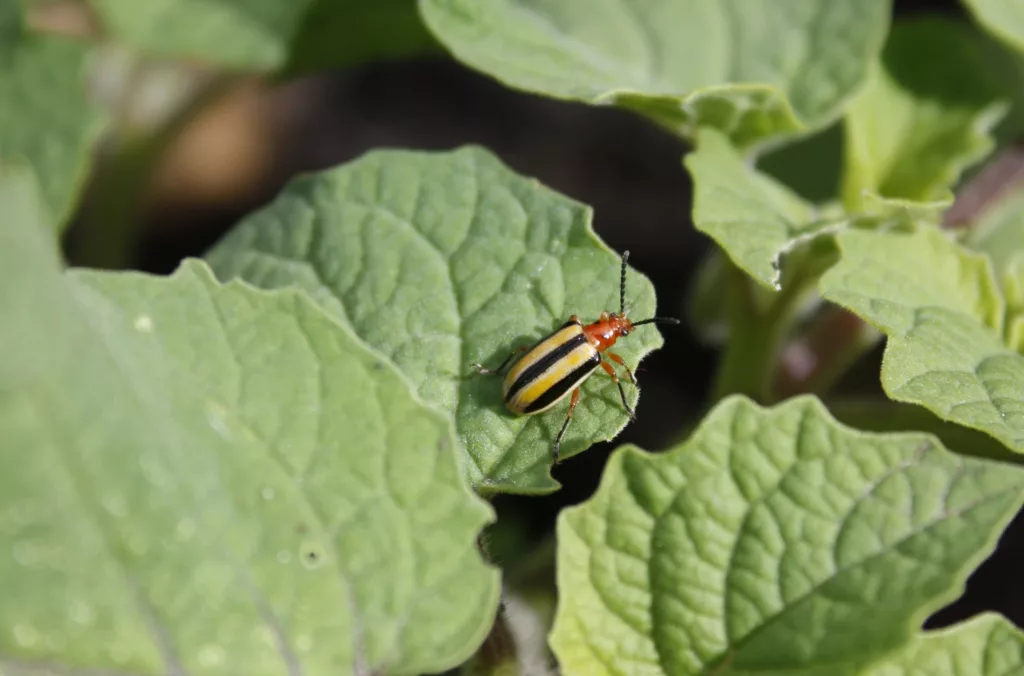
These beetles can easily be confused with the striped cucumber beetle, however their red head and upper body is the easiest way to tell them apart from cucumber beetles. Not only that, but you won’t see the potato beetle on your cucumber plants since this isn’t their preferred plants.
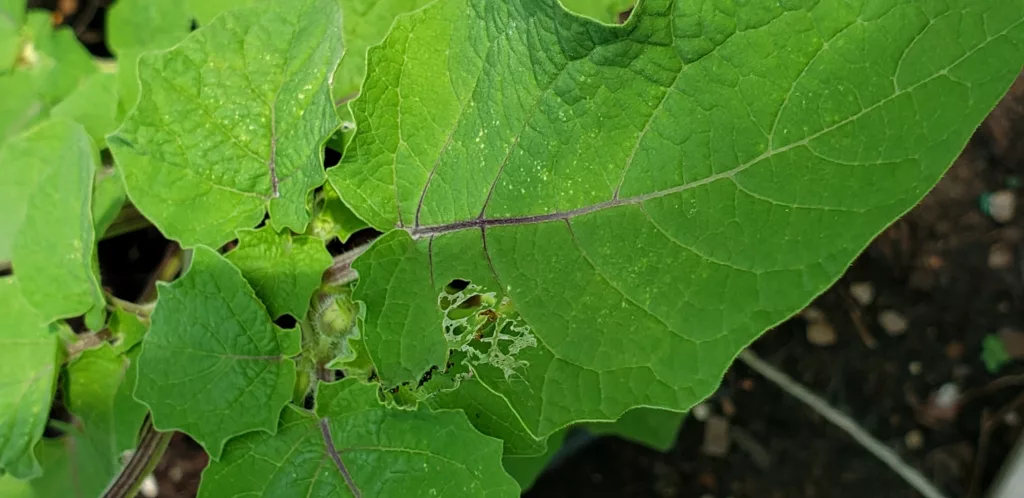
All plants in the nightshade family are susceptible to damage, however your ground cherry plants or tomatillos are a major target. The picture above is an example of larvae damage seen from above the leaf. The larvae will defoliate the entire life, so when you notice the leaves have been damaged, it’s a good indicator to start looking for eggs or larvae.
Three-lined potato beetles have one or two generations per year. Adult females will lay clusters of orange eggs on the bottom of leaves or blooms. Once the eggs hatch the larvae begin to feed on the leaves. As the larvae get larger, they continue to feed on the leaves before they turn to pupae in mid to late summer.
Three-lined potato beetle populations are simple to maintain once you’re familiar with how to manage them. With proper care, these pests won’t be a major issue in future seasons.
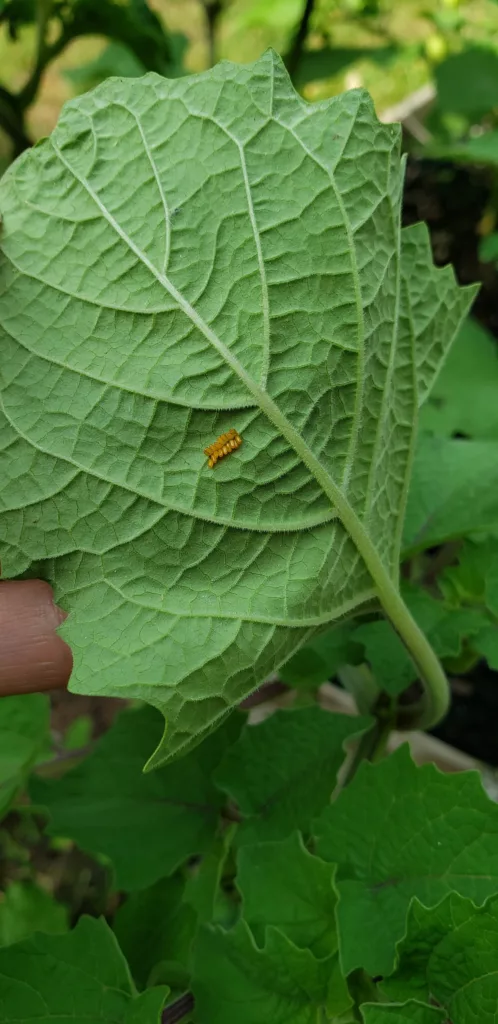
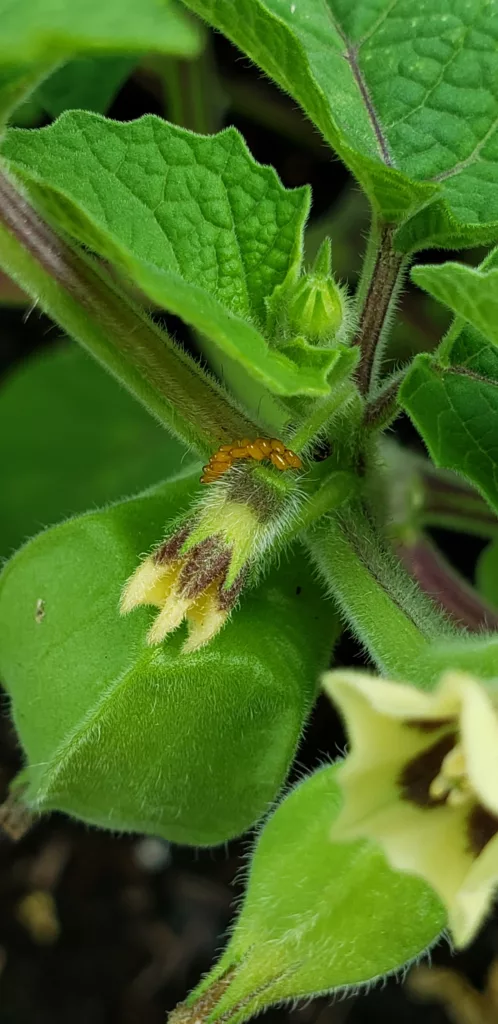
The eggs are really easy to spot since they are orange and are found in clusters. Check the underside of leaves regularly, and if you find any eggs, wipe them off. This is the best way to manage these beetles since you stop them before they even hatch. Also, wiping eggs off is the least gross of the options, in our opinion (you’ll see).
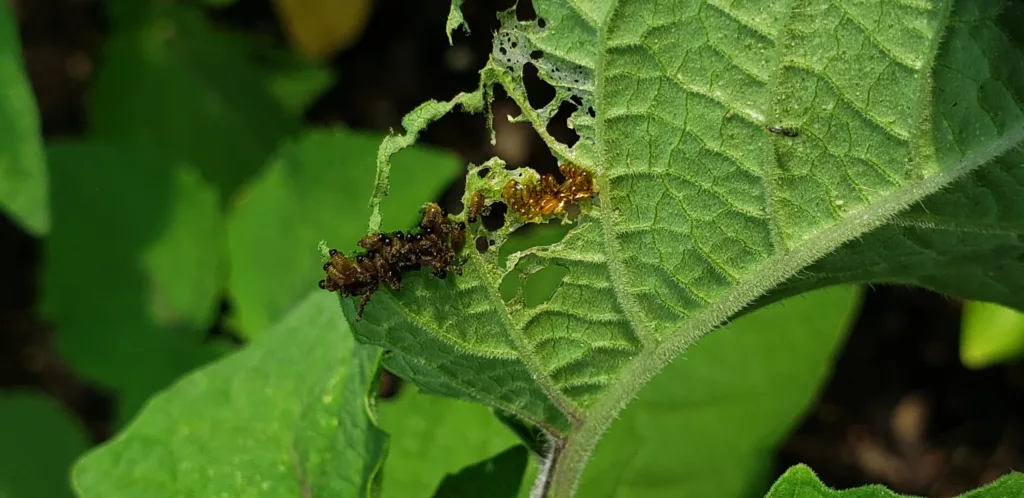
Okay, this is the worst of all the management options. The larvae are GROSS. If you find larvae on a leaf, just take the whole leaf off and squash it. If you’re wondering what makes this so gross, look at the picture below. The larvae use a specific tactic in order to avoid being eaten by predators and that is…. sticking their poop up their backs! I know if I was a bird, this tactic would work.. Gross!
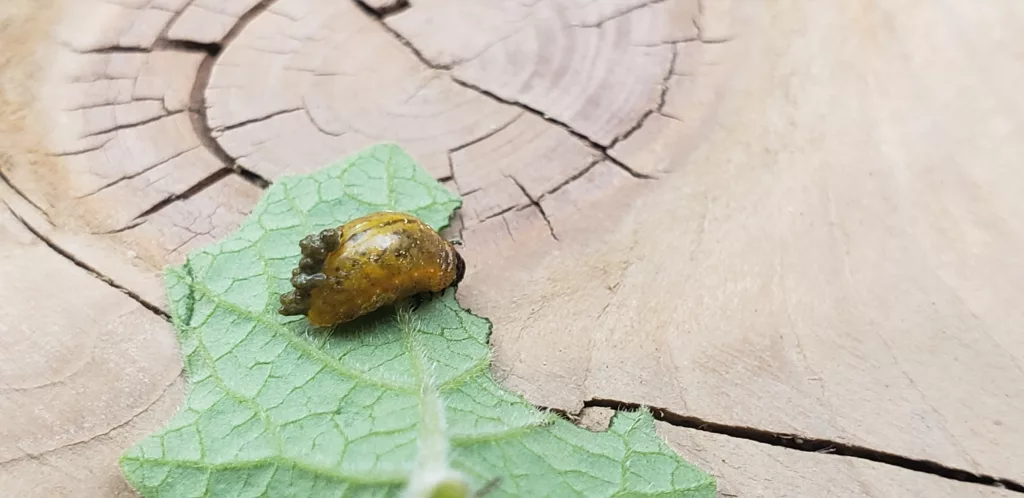
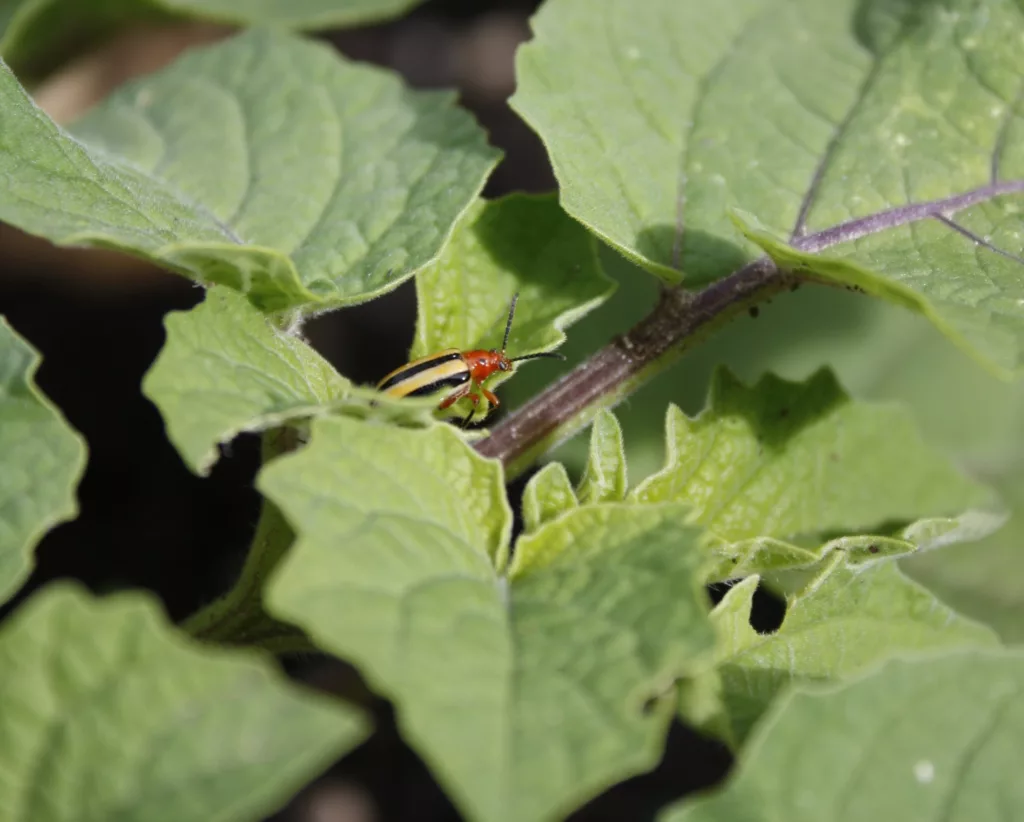
The last option is to hand pick adults off the plants and drop them in soapy water. The good news is they’re easy to spot because of their bright colour. The bad news is that the three-lined potato beetle is a pretty talented flier so it can be difficult to catch them. They also move quickly, darting under a leaf to hide. If you can get them into a jar of soapy water, great. If not, just keep your eye out for eggs and wipe them off. Both options are equally effective.
Prevention of this beetle is difficult, and since they aren’t a major pest it isn’t something that is necessary. You can grow your potatoes or ground cherries under row cover since they don’t require pollinator, Technically eggplants are also self pollinating but do produce better with pollinators. Tomatillo do need pollinators so it isn’t feasible to grow them under cover. Taking the steps listed above to manage the beetle is simple and doesn’t take up much time when done regularly.

Gardening Advice for Short Season Gardeners
Privacy Policy • Terms and Conditions
© 2025 by Urban Gardening Canada